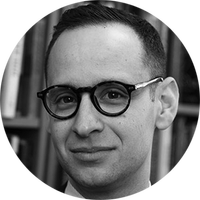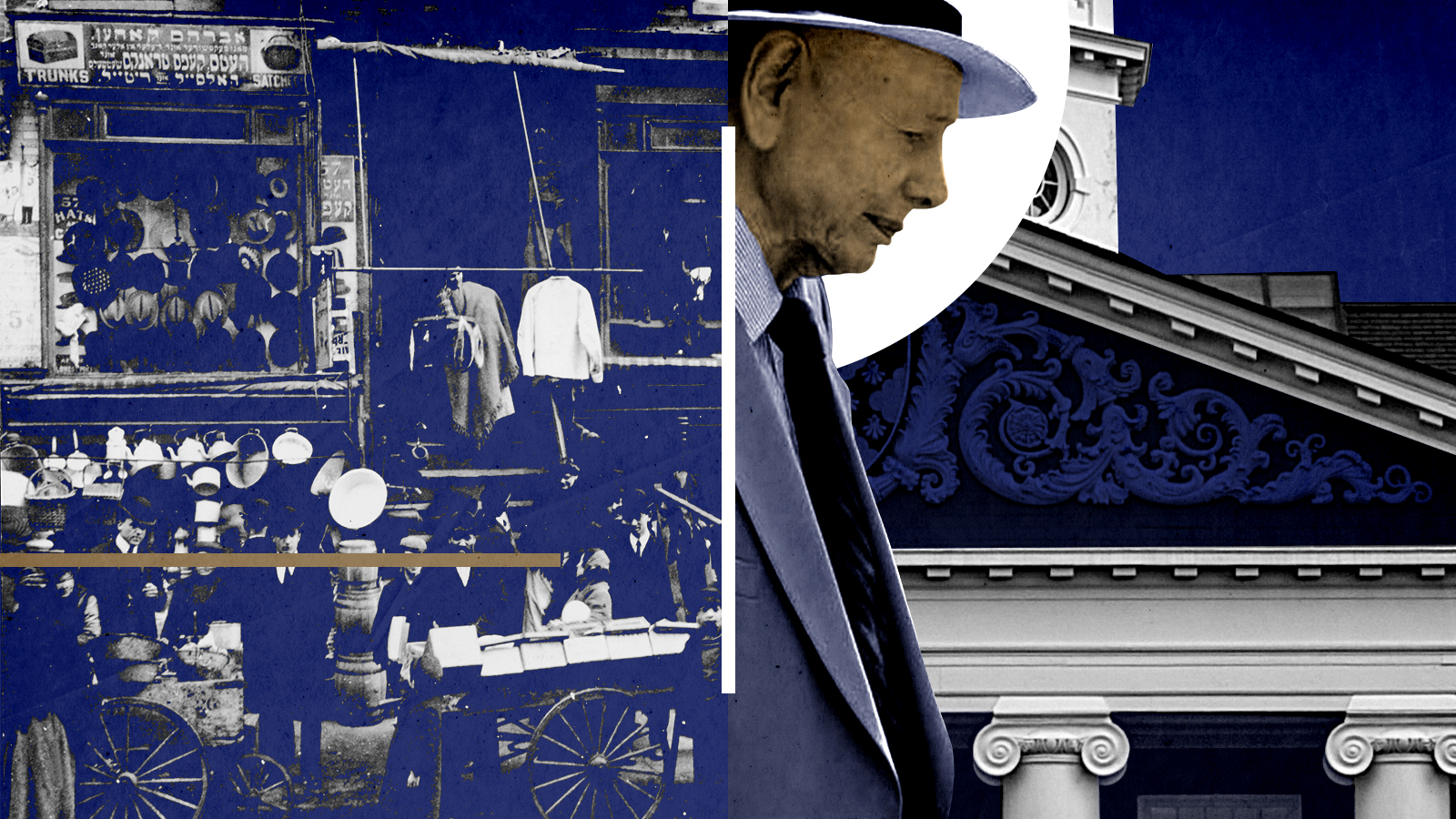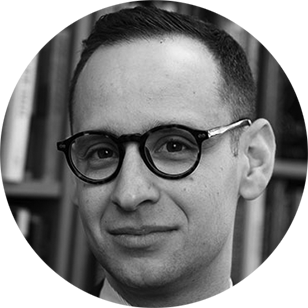How American Jews lost by winning
On the triumph and the tragedy of the American Jewish story


The president of Harvard is a Jew. So were two of his last four predecessors. The secretary of the treasury and former chairwoman of the Federal Reserve is a Jew. So were her two confirmed predecessors in the former position and two predecessors in the latter. Since Ruth Bader Ginsburg's death, there have been only two Jews on the Supreme Court. But that loss is partially compensated by Merrick Garland's position as attorney general, a consolation price for his blocked nomination to the Supreme Court.
The position of Jews at the top of major civic institutions is both a success story and a somewhat touchy subject. Out of all disproportion to numbers — under 2 percent of the US population — Jews occupy some of the most influential positions in American life. As a small but hugely influential group defined by a combination of religious, ethnic, and cultural characteristics, American Jews can be seen as successors to the WASPs of the 20th century (the subject of my last column).
The upward mobility of the descendants of most Ashkenazi immigrants in the late 19th Century came at a cost, though. Jews moved smoothly into positions opened to meritocratic competition, but gradually lost the vitality that fueled their success. Despite their decline into social invisibility, WASPs won by losing, as institutions including Harvard, the Federal Reserve, and the judiciary achieved ever greater influence over American life. American Jews lost by winning, taking over the reins of power but giving up their distinctive identity.
The Week
Escape your echo chamber. Get the facts behind the news, plus analysis from multiple perspectives.

Sign up for The Week's Free Newsletters
From our morning news briefing to a weekly Good News Newsletter, get the best of The Week delivered directly to your inbox.
From our morning news briefing to a weekly Good News Newsletter, get the best of The Week delivered directly to your inbox.
Despite their tiny population before the mid-19th century, Jews are woven into American mythology. Pilgrim and Puritans were inspired by the epic of the Biblical Hebrews. During the war of independence, ministers compared the 13 states to the tribes of Israel. Just as the chosen people required a new covenant in order to become a unified nation, Americans needed a new constitution.
There were ugly incidents of exclusion. On the whole, though, Jews were better integrated in American life than anywhere else in the Western world. Jews responded in kind. Many rejected traditional hopes for restoration to the land of Israel, embracing the United States as the new promised land. An almost religious commitment in America as the first true home Jews could claim in 200 years fueled an extraordinary record of creativity. American literature, cinema, music, and scholarship are unimaginable without Jewish contributions.
Antipathy to Jews intensified after the Civil War, though. Increased immigration, the growing role of finance, and endemic corruption encouraged anxieties that Jews were threats to American unity and prosperity.
Popular memory blames low-class nativists for rising Jew hatred, but the new anti-semitism was largely an elite phenomenon. Facing challenges to their vision of national regeneration, WASPs fixated on Jews as the personification of a different and worse America. In public, patrician reformers including both Roosevelts cultivated Jewish support, but in private, both could be less welcoming. Intensifying through the 1930s, upper-class anti-semitism was only discredited by the Second World War, which exposed the world to murderous hatred with no American counterpart.
A free daily email with the biggest news stories of the day – and the best features from TheWeek.com
Among Jews, WASPs provoked a combination of awed fascination and resentment.
To the small, mostly German-Jewish elite, WASPs were the model to be imitated. Excluded from WASP schools and organizations, they set up substitutes for "our crowd." Particularly in New York City, these institutions developed into a sort of parallel world. They even adopted the tradition of silly nicknames, as represented by "Punch" Sulzberger, who inherited The New York Times.
To immigrants and first-generation Americans, WASPs seemed less models than another species. Athletic good looks, elegant informality, and vaguely British accents represented a world they could never comfortably enter. This tension was a major theme of American Jewish art. From the Marx Brothers to Malamud, Jews juxtaposed a self-deprecating image of themselves to stereotypes of gentility.
Jewish academics and intellectuals pursued a different strategy. Rather than distinguishing themselves from WASPs, scholars including Daniel Boorstin, Louis Hartz, and Richard Hofstadter subsumed both Jews and WASPs into an ostensible consensus around liberal values. In their accounts, American history was defined by agreement about individual rights, religious pluralism, and shared prosperity. WASP dissenters to this vision were recast as marginal cranks, while optimistic Jewish liberals emerged as archetypal Americans.
Jews' 20th century struggle with WASPs is recapitulated in The Netanyahus, an enthusiastically reviewed new novel by Joshua Cohen. Inspired by a real incident, the plot revolves around a visit in the late '50s to the fictional Corbin College by the idiosyncratic (and very real) historian Benzion Netanyahu, best known as father to Israel's longest-serving prime minister.
At Corbin, Netanyahu is welcomed by Ruben Blum, who's been given the job because he's the only Jew on the history faculty. Already uncertain of his place among the WASPs of Corbin, the Bronx-born "Rube" is embarrassed by a literal "son of Zion" who makes no effort to disguise his intellectual arrogance, social vulgarity, and personal hostility.
Netanyahu isn't an unsettling figure just because of his personal conduct. He defends a radically different vision of the Jewish future. Rube is on track to become, if not exactly a WASP, then an undistinguished upper middle-class American. Zionists like Netanyahu argued that this was a road to national death, whether by the gentle method of assimilation or the unimaginable threat of murder.
The Netanyahus lampoons this argument as fanatical, paranoid, and vaguely malevolent. What the satire reveals, though, is Benzion wasn't totally wrong about the American Jews who ended up joining and ultimately displacing WASPs in their academic and other bastions. The WASPs faded from the scene but established a framework for cultural influence and social mobility that continues to exist today. Jews have flourished within that framework, but lost the characteristics that once made us so energetic and interesting.
That's why a book like The Netanyahus can only be written as a period piece. As Cohen reveals, Rube succeeds in joining and eventually displacing the WASP mediocrities who once patronized him. He even becomes a bit of a conservative, complaining of campus activism. It's a common trajectory. Blum's career echoes not one but two namesakes: literary critic Harold Bloom (who really hosted Benzion Netanyahu) and political theorist Alan Bloom.
It's also a journey that couldn't be set in the 21st century. Once outsiders to the academic and cultural establishment, Jews are now the norm, enjoying the nepotism and cultural familiarity that WASPs once monopolized. In an essay on Cohen, the writer Ben Judah noted that "the elite, the professions, feel if anything WASP-Jewish here in the North East, which is actually a pretty good description of most of our parents or our own relationships after this many generations in the New World."
The normality of American Jewish life fuels our obsession with Israel, the real subject of The Netanyahus. The Jewish State, personified by Benzion himself, is everything we WASP-Jews are not: colorful, proud, unconventional, but also a bit offensive to delicate sensibilities. More than 50 years after the setting of the novel, the major factions of American Jewish life today are defined by their views about the Israel more than religious or cultural criteria. We define ourselves in relation to something else, rather than drawing on our own resources.
Not all Jews fit this mold any more than most American Protestants were Louis Auchincloss, the bard of WASP decline. Orthodox communities both in the US and in Israel are developing ways of balancing modernity with traditional learning and observance that don't match the classic assimilation narrative. That's why some of the most popular Jewish-themed art of the last few years, the Israeli series Shtisel and German-American production Unorthodox has dealt with Haredi communities that received little attention in the past.
There are also other stories to tell. Today, Asian Americans face many of the same stereotypes at the same institutions that Jews did a century ago. Conditioned to think of ourselves as scrappy outsiders, liberal Jews often can't see that we're now in the same position as the country club snobs who debated whether our grandparents had the right character to join.
In the end, the WASPs chose openness, even though it meant the end of their hegemony. This was less because they embraced liberal theories, as consensus historians imagined, than because they no longer had the energy for cultural and political achievements that might justify their privileges. Like the gentleman-scholars of Corbin's history department, American Jews are fading into comfortable irrelevance. In The Netanyahus, Rube's daughter is already obsessed with altering her Jewish nose. If recent studies are right, her children likely wouldn't be Jewish at all.
Benzion Netanyahu would have said the alternative to this fate is to move to Israel. Rube Blume's father might have urged him to stay in the Bronx, leaving fancy colleges and leafy suburbs to the WASPs whose ancestors appropriate our stories while building a country of their own. Astonished and gratified by our own success, we didn't listen to either argument. That is the triumph and the tragedy of the American Jewish story.
Samuel Goldman is a national correspondent at TheWeek.com. He is also an associate professor of political science at George Washington University, where he is executive director of the John L. Loeb, Jr. Institute for Religious Freedom and director of the Politics & Values Program. He received his Ph.D. from Harvard and was a postdoctoral fellow in Religion, Ethics, & Politics at Princeton University. His books include God's Country: Christian Zionism in America (University of Pennsylvania Press, 2018) and After Nationalism (University of Pennsylvania Press, 2021). In addition to academic research, Goldman's writing has appeared in The New York Times, The Wall Street Journal, and many other publications.
-
 A lemon-shaped exoplanet is squeezing what we know about planet formation
A lemon-shaped exoplanet is squeezing what we know about planet formationUnder the radar It may be made from a former star
-
 Political cartoons for January 4
Political cartoons for January 4Cartoons Sunday's political cartoons include a resolution to learn a new language, and new names in Hades and on battleships
-
 The ultimate films of 2025 by genre
The ultimate films of 2025 by genreThe Week Recommends From comedies to thrillers, documentaries to animations, 2025 featured some unforgettable film moments
